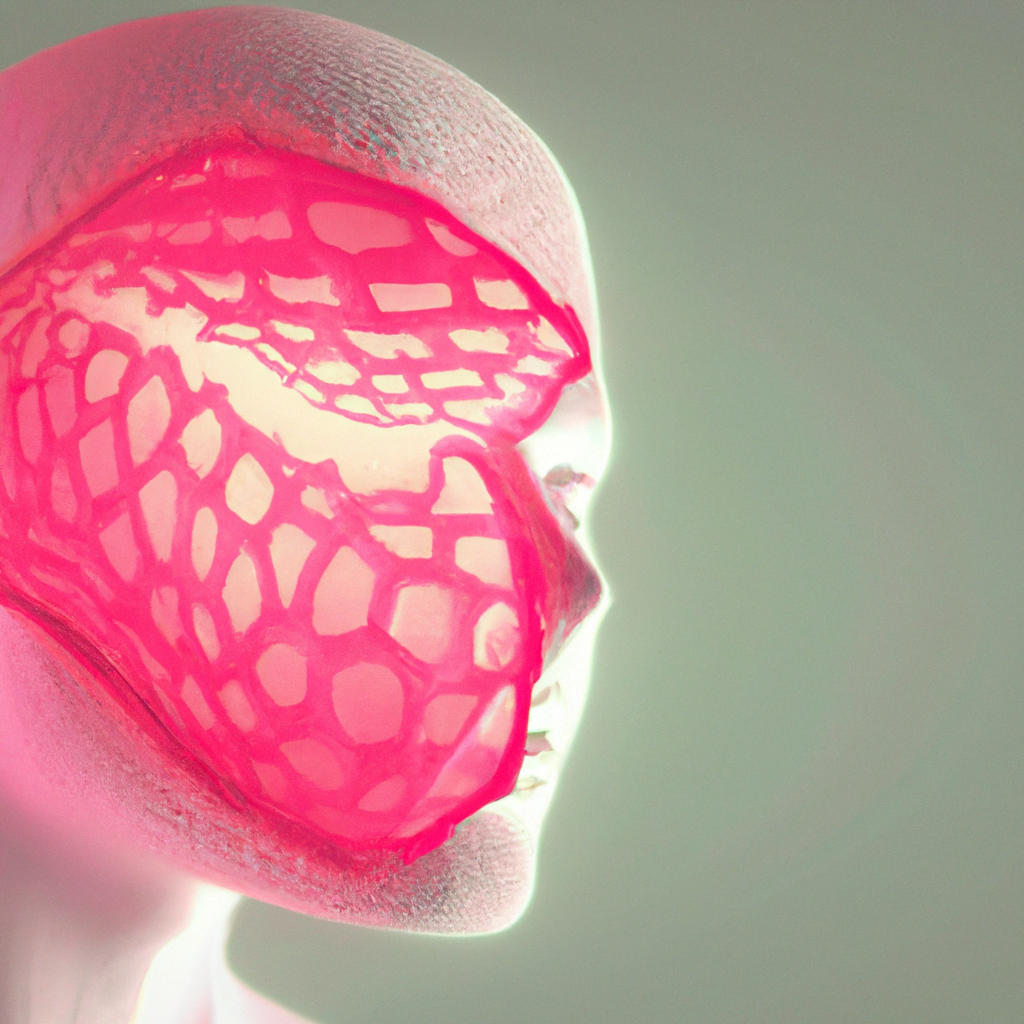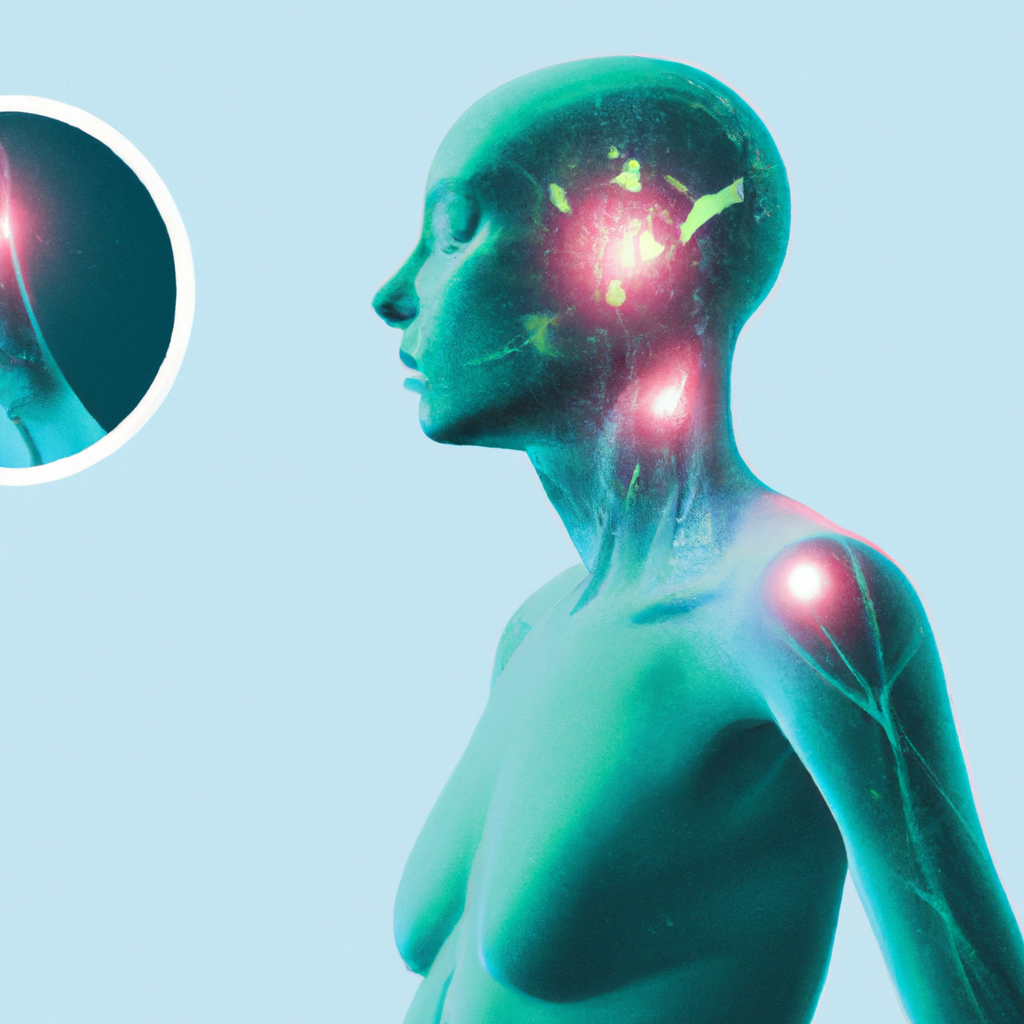Have you ever wondered what goes into creating those detailed and informative illustrations you see in medical textbooks or educational materials? “Exploring The World Of Medical Illustration” takes you on a journey through this fascinating field that combines art, science, and storytelling. From understanding the intricacies of anatomy to effectively representing complex medical procedures, medical illustrators use their artistic skills to communicate important information to a wide range of audiences. Discover the tools and techniques they utilize, the impact of technology on their work, and the constant evolution of this captivating art form. Step into the world of medical illustration and uncover the beauty and importance of visual storytelling in the realm of healthcare.

This image is property of images.pexels.com.
Understanding Medical Illustration
Medical illustration is a specialized field that combines art and science to create visual representations of medical information. It involves the skillful depiction of anatomical structures, surgical procedures, and medical devices to accurately communicate complex medical concepts to a wide audience. In this article, we will explore the definition of medical illustration, the role of medical illustrators, and the ethical considerations within the field.
Defining Medical Illustration
Medical illustration involves the creation of visual materials that aid in the understanding and communication of medical information. These visuals can range from anatomical illustrations that depict the human body in various states to surgical illustrations that detail step-by-step procedures. Medical illustration goes beyond basic sketches and requires a deep understanding of anatomy, medical terminology, and technical drawing skills.
The Role of Medical Illustrators
Medical illustrators play a crucial role in the healthcare industry by translating complex medical information into visual form. They work closely with healthcare professionals, researchers, and educators to create illustrations that accurately depict the subject matter while still being accessible to a non-medical audience. Medical illustrators may work in hospitals, medical schools, research institutions, or freelance in the industry.
Ethics in Medical Illustration
Ethics are an essential aspect of medical illustration. As medical illustrators are responsible for visually representing medical concepts, they must adhere to ethical guidelines to ensure accurate and sensitive depictions. This includes respecting patient privacy, obtaining consent when necessary, and maintaining the highest level of professionalism. Medical illustrators must also be aware of potential biases and ensure that their illustrations are objective and free from personal influences.
Skills and Qualifications
To excel in the field of medical illustration, certain skills and qualifications are essential. Whether it be technical drawing skills, deep knowledge of anatomy, proficiency in medical terminology, or expertise in digital illustration, a combination of these abilities is necessary for success.
Technical Drawing Skills
Technical drawing skills are the foundation of medical illustration. Being able to accurately and precisely depict the human body, medical procedures, or medical devices requires a high level of technical skill. This includes attention to detail, understanding perspective and proportion, and the ability to reproduce accurate representations.
Anatomy Knowledge
A thorough understanding of anatomy is crucial for medical illustrators. They must have comprehensive knowledge of the human body’s structure, including bones, muscles, organs, and systems. This knowledge allows them to accurately depict anatomical structures in their illustrations, contributing to the educational value of their work.
Medical Terminology
Medical illustrators must be well-versed in medical terminology to effectively communicate medical concepts. Understanding the terminology used by healthcare professionals allows illustrators to accurately label and describe anatomical structures or medical procedures in their illustrations. This ensures clarity and precision in the information being conveyed.
Digital Illustration Skills
With advancements in technology, digital illustration skills have become increasingly important in the field of medical illustration. Proficiency in digital illustration software enables medical illustrators to create highly detailed and realistic illustrations, as well as easily modify and revise their work. A strong understanding of digital tools and techniques opens up new possibilities for creativity and efficiency.

This image is property of images.pexels.com.
Tools and Techniques
Medical illustration involves the use of various tools and techniques to create accurate and visually appealing visuals. These range from traditional drawing tools to digital drawing tools, and even photography and imaging techniques.
Traditional Drawing Tools
Traditional drawing tools such as pencils, pens, and paper are still widely used in medical illustration. These tools allow for precise and detailed line work, shading, and texture. Traditional mediums like graphite and ink offer a tangible and authentic feel to the illustrations and are preferred by some medical illustrators for their versatility and control.
Digital Drawing Tools
Digital drawing tools have revolutionized the field of medical illustration. The use of graphic tablets, styluses, and specialized software allows for more flexibility, efficiency, and endless possibilities for experimentation. Digital tools offer features such as layering, color manipulation, and the ability to easily make revisions, enhancing the quality and speed of the work produced.
Photography and Imaging Techniques
In addition to drawing, medical illustrators may also use photography and imaging techniques to enhance their illustrations. This can include incorporating medical imaging scans, such as X-rays or CT scans, into their illustrations to provide a more accurate representation of anatomical structures. Photography can also be used to capture reference images or to document surgical procedures for reference in surgical illustrations.
Applications of Medical Illustration
Medical illustration has a wide range of applications within the healthcare industry. It serves as a valuable tool in medical education, scientific research, medical literature, and patient education.
Medical Education
In medical education, medical illustrations are used to enhance the learning experience of students. They provide visual aids that help students understand complex anatomical structures, physiological processes, and medical procedures. Medical illustrations can be found in textbooks, digital educational platforms, and classroom presentations, providing a visual reference that aids in the retention and understanding of information.
Scientific Research
Medical illustration plays a significant role in scientific research. Illustrations can accompany research papers, presentations, and scientific posters, providing a visual representation of the research findings. They can depict microscopic structures, cellular processes, or complex scientific concepts in a way that is accessible to both researchers and the general scientific community.
Medical Literature
Medical illustrators contribute to medical literature by creating illustrations that accompany articles, journals, and textbooks. These illustrations are often used to explain medical conditions, treatment options, or surgical procedures in a way that is easily understood by healthcare professionals and patients alike. The visual representation strengthens the information being conveyed, making it more engaging and memorable for the readers.
Patient Education
Medical illustrations also play a vital role in patient education. They can be used to explain medical conditions, treatments, or surgical procedures to patients and their families. By visually depicting the information, patients can better understand their diagnosis, treatment options, and expected outcomes. This improves patient communication and allows patients to make informed decisions about their healthcare.

This image is property of images.pexels.com.
Types of Medical Illustration
Medical illustration encompasses a wide range of specialties, each with its unique focus and purpose. Some of the main types of medical illustration include anatomical illustrations, surgical illustrations, pathological illustrations, and medical device illustrations.
Anatomical Illustrations
Anatomical illustrations depict the structures of the human body in detail. This type of illustration focuses on accurately representing the bones, muscles, organs, and systems of the body. Anatomical illustrations can be used for educational purposes, surgical planning, or patient education. They often include labels and annotations to provide a comprehensive understanding of the depicted structures.
Surgical Illustrations
Surgical illustrations depict surgical procedures and techniques. They can showcase the steps involved in a specific surgical procedure, the instruments used, and the expected outcome. Surgical illustrations are used for surgical training, patient education, and medical literature. They help surgeons prepare for complex surgeries, aid in surgical planning, and provide a visual guide for patients to understand the procedure they will undergo.
Pathological Illustrations
Pathological illustrations focus on depicting abnormalities and diseases within the human body. These illustrations can represent abnormal cellular structures, the progression of a disease, or the effects of certain medical conditions on the body. Pathological illustrations are used for educational purposes, research, and medical literature to help healthcare professionals and researchers understand, diagnose, and treat various medical conditions.
Medical Device Illustrations
Medical device illustrations depict medical instruments and devices used in healthcare settings. These illustrations can range from depicting the structure and functionality of a device to demonstrating its use in a specific medical procedure. Medical device illustrations are used for educational purposes, product marketing, and medical literature. They assist healthcare professionals in understanding the function and proper use of medical devices, while also aiding manufacturers in promoting their products.
History and Evolution
The field of medical illustration has a rich history that dates back centuries. From the early anatomical illustrations to the advancements brought about by technology, medical illustration has evolved significantly over time.
Early Medical Illustrations
Early medical illustrations can be traced back to ancient civilizations, where detailed drawings of the human body were used for medical purposes. One of the most well-known examples of early medical illustration is the work of Andreas Vesalius, a Belgian anatomist from the 16th century. Vesalius revolutionized the field of anatomy with his detailed illustrations in his famous book, “De Humani Corporis Fabrica” (On the Fabric of the Human Body). These illustrations marked a significant shift in the understanding and study of anatomy.
Advancements in Medical Illustration
With the invention of the printing press, medical illustration became more accessible to the masses. Detailed anatomical atlases and textbooks were published, providing healthcare professionals with a visual reference for their practice. As the field of medicine advanced, so did the techniques and tools used in medical illustration. From detailed engravings to color illustrations, medical illustrators continued to push the boundaries of their craft, providing accurate and visually appealing depictions of medical information.
Influence of Technology on Medical Illustration
The advent of technology has had a profound impact on the field of medical illustration. The use of digital tools and software has allowed medical illustrators to create highly detailed and realistic illustrations with ease. Three-dimensional modeling, virtual reality, and augmented reality have also opened up new possibilities for medical illustration, allowing for interactive and immersive experiences. These advancements have not only improved the accuracy and efficiency of medical illustrations but have also introduced innovative ways to educate and engage medical professionals and patients.

Challenges and Opportunities
While medical illustration offers numerous opportunities, it also presents its fair share of challenges. From ethical considerations to collaboration with medical professionals, medical illustrators must navigate various aspects of their work to ensure the highest quality of their illustrations.
Ethical Considerations
Ethics play a crucial role in medical illustration. Medical illustrators must consider the potential impact of their work on patients, healthcare professionals, and the wider community. They must ensure accuracy and sensitivity in their depictions, respect patient privacy, and obtain necessary consent when using patient-specific information. Understanding the ethical boundaries of medical illustration is essential for maintaining professionalism and trust within the field.
Patient Privacy
Medical illustrators often work with patient-specific information, such as medical records or imaging scans. It is essential for medical illustrators to respect patient privacy and maintain confidentiality. Any use of patient-specific information must adhere to legal and ethical guidelines, ensuring that patient identity remains protected. Medical illustrators must prioritize patient privacy and ensure that their work does not compromise the confidentiality of individuals.
Collaboration with Medical Professionals
Successful medical illustration often requires collaboration with healthcare professionals, researchers, and educators. Medical illustrators must effectively communicate and collaborate with these stakeholders to accurately depict the desired subject matter. Understanding the needs and requirements of medical professionals and incorporating their feedback is crucial for creating illustrations that effectively convey the intended message. Strong collaboration skills enable medical illustrators to create illustrations that meet the goals and expectations of their clients.
Career Opportunities
The field of medical illustration offers a range of career opportunities. Medical illustrators can work in diverse settings such as hospitals, medical schools, research institutions, publishing houses, or as freelancers. They may create illustrations for textbooks, research papers, patient education materials, scientific journals, or medical marketing materials. With the increasing demand for visually engaging medical content, the career prospects for medical illustrators are promising.
Training and Education
To pursue a career in medical illustration, acquiring the necessary training and education is vital. There are various degree programs, certifications, and professional associations available to help aspiring medical illustrators develop the required skills and knowledge.
Degree Programs in Medical Illustration
Several universities and art schools offer degree programs in medical illustration. These programs provide a comprehensive curriculum that covers anatomy, digital illustration techniques, medical terminology, and ethical considerations. A degree in medical illustration equips students with the skills and knowledge needed to pursue a career in the field. The coursework often includes practical training, allowing students to develop a portfolio of work that showcases their abilities.
Certifications and Professional Associations
Certifications and professional associations can further enhance a medical illustrator’s credentials and provide ongoing support and resources. Organizations such as the Association of Medical Illustrators (AMI) offer certifications and memberships that validate a medical illustrator’s expertise and dedication to the field. These certifications and memberships provide networking opportunities, access to industry events, and continuing education to keep up with advancements in medical illustration.
Continuing Education and Professional Development
Medical illustrators must continuously update their skills and knowledge to stay relevant in the field. Continuing education and professional development opportunities, such as workshops, conferences, and online courses, allow medical illustrators to expand their expertise and stay up-to-date with emerging trends. These opportunities also provide a platform for networking and collaboration with other professionals in the field.

Exploring Digital Platforms
With the advancement of digital platforms, medical illustrators have access to a wide range of tools and opportunities. Digital platforms offer numerous advantages, but also come with unique challenges.
Advantages of Digital Platforms
Digital platforms offer medical illustrators the advantage of increased efficiency and flexibility. Digital tools and software allow for easy manipulation, editing, and revision of illustrations. They also provide access to a vast array of color options and textures, allowing for more realistic and visually engaging illustrations. Digital platforms also offer the convenience of easily sharing and distributing illustrations electronically, reaching a wider audience.
Digital Tools and Software for Medical Illustration
Digital tools and software have revolutionized the field of medical illustration. Graphic tablets, styluses, and software such as Adobe Illustrator and Photoshop have become indispensable tools for medical illustrators. These tools offer features like layering, image manipulation, and 3D modeling, enabling medical illustrators to create highly detailed and realistic illustrations. The use of digital tools allows for more precise and efficient work and offers endless possibilities for creativity and experimentation.
Virtual Reality and Augmented Reality in Medical Illustration
Virtual reality (VR) and augmented reality (AR) are emerging technologies that offer exciting possibilities in medical illustration. VR creates immersive experiences that allow users to interact with three-dimensional models of anatomical structures or engage in virtual surgical simulations. AR overlays digital information onto the real world, providing real-time visualizations during surgical procedures or patient consultations. The incorporation of VR and AR in medical illustration enhances the learning experience, improves surgical planning and outcomes, and increases patient engagement and understanding.
Future Trends
As technology continues to advance, several future trends are emerging in the field of medical illustration. These trends include the integration of artificial intelligence, the utilization of virtual anatomy models, and innovations in surgical illustration.
Artificial Intelligence in Medical Illustration
Artificial intelligence (AI) is poised to play a significant role in the future of medical illustration. AI algorithms can analyze and interpret medical images, allowing for faster and more accurate diagnoses. AI can also assist medical illustrators in creating realistic illustrations by generating detailed anatomical structures or automating repetitive tasks. The integration of AI in medical illustration has the potential to revolutionize the field, making it more efficient and accessible.
Virtual Anatomy Models
Virtual anatomy models provide an interactive and immersive way to explore the human body. These models utilize VR or AR technology to allow users to navigate through three-dimensional representations of anatomical structures. Virtual anatomy models offer a hands-on learning experience, enabling students and healthcare professionals to better understand the spatial relationships and complexities of the human body. They provide an alternative to traditional anatomical illustrations and offer a more engaging and dynamic way to study and visualize anatomy.
Innovations in Surgical Illustration
Innovations in surgical illustration are constantly evolving. Medical illustrators are finding new ways to showcase surgical procedures using three-dimensional modeling, animation, and real-time visualizations. These advancements enhance the understanding of complex procedures, aid in surgical planning, and enable surgeons to communicate more effectively with patients. Surgical illustration continues to evolve, offering new opportunities for medical illustrators to contribute to the field of medicine.
In conclusion, medical illustration is a multifaceted field that combines art and science to visually communicate complex medical information. Medical illustrators play a crucial role in educating, informing, and engaging healthcare professionals and patients through their accurate and visually appealing illustrations. With advancements in digital platforms, technology, and emerging trends, the future of medical illustration holds exciting opportunities for growth and innovation. Whether it be in medical education, scientific research, or patient education, medical illustration will continue to play a vital role in the healthcare industry.

